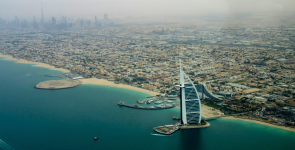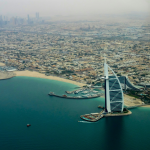The palm-fringed beaches and turquoise lagoons of the Maldives, a tourism haven for honeymooners and luxury travellers, continued to propel the nation’s economy in the final quarter of 2023. However, the latest report by the Maldives Monetary Authority reveals a complex economic landscape where tourism’s strength masks underlying vulnerabilities in other sectors.
Tourism Fuels Growth, But Challenges Persist
Tourist arrivals surged in the fourth quarter, surpassing the government’s ambitious target of 1.8 million visitors for the entire year. This stellar performance was driven by a robust European market and the much-anticipated return of Chinese tourists after pandemic restrictions were eased.
While overall arrivals buoyed the economy, the tourism sector itself showed signs of potential strain. Resort bed nights, a key indicator of tourism sector health, declined during the quarter. The Maldives Monetary Authority anticipates a slight contraction within the sector despite the impressive arrival numbers.
Inflation Eases, Construction and Fisheries Falter
Easing inflation provided some relief to the Maldivian economy, with the consumer price index falling to 2.3% in the fourth quarter. This decline was attributed to factors such as falling prices for information and communication services, as well as furnishings and household equipment.
While inflation moderated, other sectors vital to the Maldivian economy showed signs of weakness. The construction industry displayed conflicting signals, suggesting potential expansion in some areas but an overall slowdown in activity. The fisheries sector, a significant contributor to the island nation’s economy, also saw mixed results. Fish purchases by local processing companies increased, but export volumes dipped – a trend that raises concerns about the long-term sustainability of the sector.
Government Finances: Tax Gains and Spending Scrutiny
The Maldivian government experienced a significant boost in revenue during the fourth quarter, primarily driven by a strong performance in tax collection. Tourism taxes, notably T-GST (tourism goods and services tax), and G-GST (general goods and services tax) rose substantially, fueled in part by increased visitor numbers.
However, greater revenue collection doesn’t necessarily translate into a balanced budget. Alongside the revenue gains, there was also a considerable increase in government expenditures. Scrutiny of these expenditures, particularly capital outlays on large infrastructure projects, will be crucial to determine whether the increased revenue is being invested in ways that promote sustained economic growth.
The Path Ahead
The Maldivian economy sits at a crossroads. While the tourism sector remains a powerful engine, the latest economic report highlights the need for diversification and a focus on other vital sectors. It remains to be seen whether the positive signals in tourism will translate into broader, more balanced economic progress for this archipelagic nation.



















